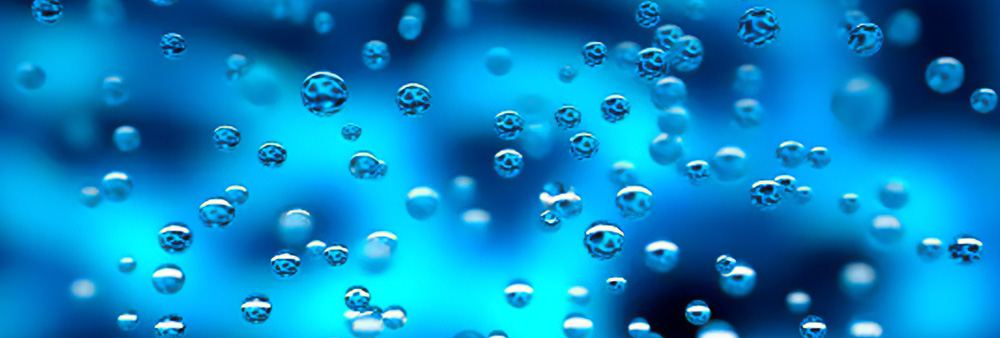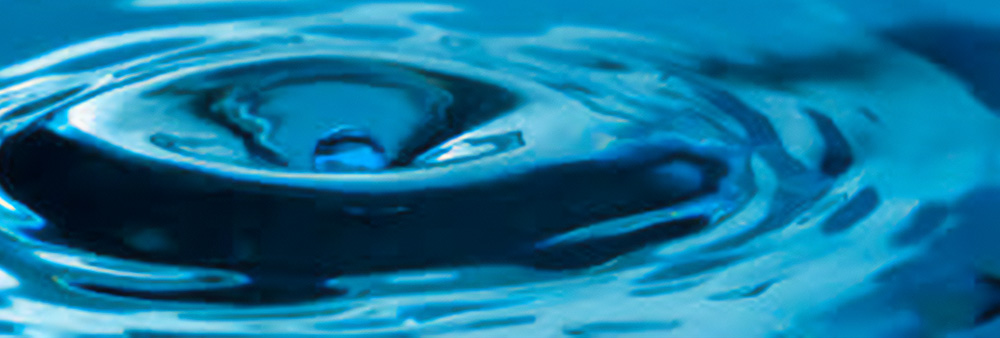Salt-Systems for both pools and hot tubs work using the principle of electrolysis.
Electrolysis Explained

Adding salt to water makes the water electrically conductive (an electrical current will pass through it).
- The “salt” used in pools is sodium chloride, chemically NaCl.
- This is same “salt” you use in food and often sourced by evaporating saltwater.
- The salt used in hot tubs is either sodium chloride or sodium bromide (NaBr).
- Our Tru Blu is 99% NaBr salt and evaporated from the Dead Sea.
Water is passed through an electrode cell which contains both anodes and cathodes.
- The “salt” used in pools is sodium chloride, chemically NaCl.
- Anodes are negatively charged.
- Cathodes are positively charged.
- Very low voltage DC electrical current passes through the water from the anode to the cathode.
- In our Blu Fusion Automatic Bromine Generator this charge never exceeds 12v. The electrical current is quite similar to that from your standard 9v battery though the electronics of Blu Fusion fluctuates this voltage rapidly.
It is a fairly involved process but this electrical current basically split the salt molecules into sodium (Na) and either chlorine (CL) or bromine (Br). However, the actual sanitizing chemicals are either hypochlorous acid or hypobromous acid. The pool / spa industry simply uses chlorine and bromine as abbreviations.
These two mild acids are the same as used in any chlorine or bromine sanitizing regimen, though there are some significant advantages to producing them with a salt-systems versus other methods.
Corrosion

Those who wish to advocate against salt-systems will often note that salt is corrosive. In fact, this is true. Salt water is very corrosive to metals. The process is actually called galvanic corrosion because it is an electrical process.
However, properly installed salt-systems will always include a sacrificial anode. This is literally a chunk of zinc that is grounded as are all of the metal parts in a pool. The result is the zinc will gradually corrode away, thereby protecting all of the other metal elements in the pool. This zinc piece will usually need to be replaced every 3 years or so.
Our Blu Fusion Automatic Bromine Generator with Anode includes this sacrificial anode however other hot tub salt systems usually do not. This is an important factor in considering the best salt-system to use in your hot tub.
Other Facts

A major reason both chlorine and bromine are popular is they are both effective sanitizers and oxidizers.
- Sanitizers kill bacteria and other pathogens in pool & spa water. However, this still leaves the dead bacteria and other biologic wastes (dead skin cells for instance) in the water.
- Oxidizers literally “oxidize” or remove these biologic waste materials
- You basically get a 2 for 1 advantage when using either chlorine or bromine
Water salinity
- Most saltwater pools operate with salt in the 2,800 – 4,200 ppm range
- Our Blu Fusion Automatic Bromine Generator operates with salt around 1,700 ppm
- We can taste salt starting around 3,500 ppm so with most salt systems, and specifically our Blu Fusion Generator, you cannot taste the salt.
- The ocean has around 35,000 ppm salt; or 35 parts per thousand (ppt)
- The Dead Sea is closer to 280,000 ppm: or 280 ppt
Calcium Scaling
- Calcium scaling is a potential problem in all pools and hot tubs. Two important facts need to be considered in regard to calcium scaling
- It will not occur as long of the pH of the water in maintained in the proper range of 7.2 – 7.6
- The electrical current within the electrode cell encourages calcium scaling, notably on the cathode. This the reason our Blu Fusion System reverses polarity every few minutes. Every few minutes the anode becomes the cathode, and the cathode becomes the anode. This result is a “self-cleaning” electrode.
- Calcium scaling is easily removed with a mild acid, commonly simple vinegar, which is acetic acid.

